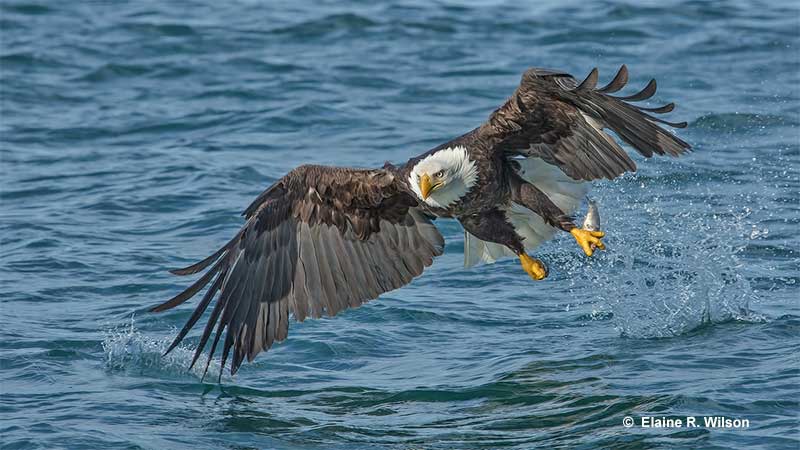
The Bald Eagle is one of the world’s largest and most attractive raptor species. Also, this majestic bird is the symbol of the United States of America, found on its Great Seal. As a pop-culture icon, it stands for freedom and power.
However, all the admiration for the Bald Eagle couldn’t prevent it from ending up endangered and nearly extinct. Their numbers plummeted from 100,000 birds in the 19th century to only around 400 nesting pairs in the 20th century.
Fortunately, strict protective laws and conservation efforts have saved the Bald Eagle from total demise. Moreover, although still sensitive, the population recovered fully, making for one of the most successful nature conservation stories in history.
On this page
History of Bald Eagles
Bald Eagle was abundant before the 19th century. Early ornithological data shows there were around 100,000 nesting Bald Eagles in the late 1800s.
However, the development soon brought trouble to many avian species, including the majestic piebald raptor, despite the fact that it engraved itself in the country’s history by becoming the national bird and the centerpiece of its Coat of Arms.
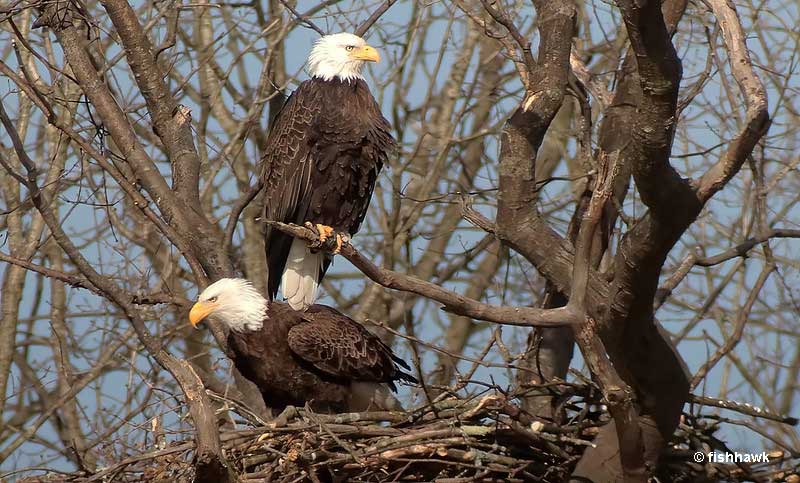
How Did the Bald Eagle Become The National Bird?
The story about how the Bald Eagle became the symbol of the U.S. and established itself on its Great Seal is a curious one.
Related: Types of eagles (around the world)
In 1776, shortly after the Declaration of Independence, Congress assigned the three Founding Fathers – Benjamin Franklin and Thomas Jefferson – the task of designing the official seal for the young nation. However, they failed to provide the idea that would fly with Congress – and the same happened with the two committees afterward.
It was not until 1782, when the task was re-assigned to Congress Secretary Charles Thomson, that the dilemma was solved. He combined the previous committees’ work but swapped the smaller White Eagle for the more attractive Bald Eagle.
Thus, he created the Great Seal of the United States we know today and established the Bald Eagle as the national bird.
Despite the legend, there is no proof that Benjamin Franklin lobbied for a turkey. However, he did write to his daughter that he thought the Bald Eagle was unfit for the purpose due to its “bad moral character.” Franklin was likely referring to the fact that Bald Eagles are also scavengers and are known to steal prey from other fish-eating birds.
Reasons Behind Endangerment
Multiple pressures like habitat destruction, hunting, poisoning, and pesticides entering the food chain all pushed the Bald Eagle to the brink of extinction in the 20th century.
Related: Endangered birds – how can we help them?
The raptor came from strong numbers of 70,000-100,000 nesting individuals to only 417 breeding pairs in the lower 48 states in 1963.
Chemical Poisons
Several substances introduced into the environment by human activity made a catastrophic impact on Bald Eagles.
Pesticides, and especially the notorious DDT, nearly stopped the reproduction of Bald Eagles and other raptors, causing a major crisis. Also, heavy metals, introduced through lead ammunition and industrial runoff, accumulate in the food chain and continue damaging the health of top predators, including the Bald Eagle.
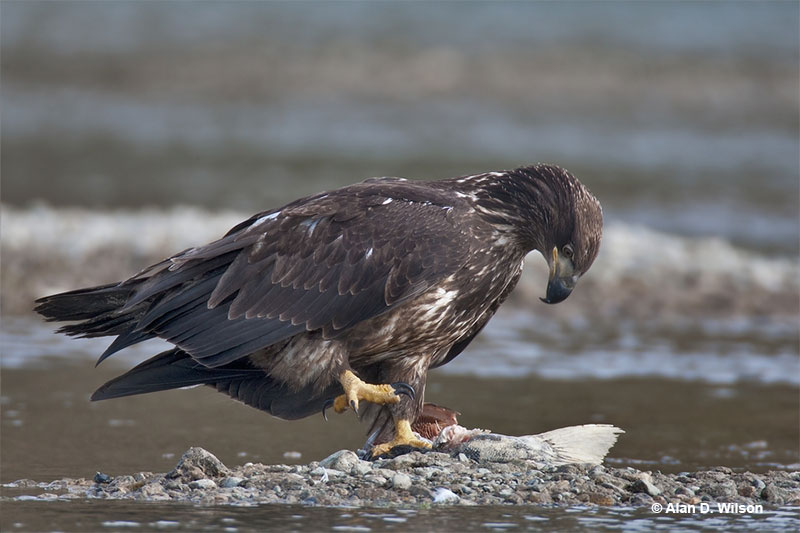
DDT
The wide mid-20th century use of the infamous insecticide DDT in agriculture and mosquito control was probably the single greatest blow to the already struggling Bald Eagle population.
Once DDT enters the food chain, it accumulates in animal bodies. It proved detrimental to birds, especially raptors, whose eggs failed to develop properly due to damaged calcium metabolism. The eggshells wouldn’t form properly, causing embryo death en masse and practically stopping raptor reproduction.
After an alarming body of publications that culminated with Rachel Carlson’s ‘Silent Spring,’ DDT was banned in 1972. With the ban, birds were able to reproduce normally once again.
Related: Bird conservation – threats & helping birds
However, it wasn’t the last chemical-induced trouble for the Bald Eagle.
Lead poisoning
Heavy metals, including lead, also accumulate in animal bodies and the food network. Apex predators are always because they constantly consume heavy metals accumulated in their prey.
Lead ammunition leads to direct lead ingestion. Bald Eagles often consume carrion shot with lead ammo, and a piece of lead as small as a grain can be lethal to an adult raptor.
However, even in microscopic quantities, lead cannot be eliminated from the body and thus accumulates over the eagle’s lifetime, leading to acute poisoning in case of higher doses or chronic lead poisoning from constant, repeated exposure.
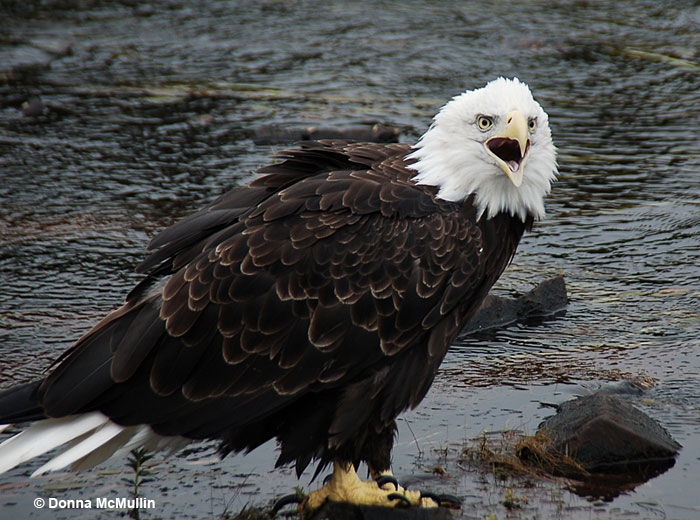
Lead shot was banned for waterfowl hunting in 1991. However, since lead is persistent, large amounts remain and cycle in the environment.
A 2022 study that collected samples across 38 states over eight years found that 47% of Bald Eagle and 46% of Golden Eagles displayed signs of chronic lead poisoning. As many as 33-35% of eagles had acute lead poisoning caused by high lead levels.
Other heavy metals like mercury, which are mostly a by-product of industrial activities, have similarly harmful effects. Also, toxic industrial runoff causes fish die-offs and endangers Bald Eagle by decimating their main prey.
Hunting
Like many other large raptors, Bald Eagles were prejudiced to compete for food with humans. Their impressive size seemed threatening to farmers, who falsely believed eagles attacked and killed their cattle.
Also, many people perceived the large fish-eating eagles as wild food competitors and widely believed them to be salmon “pests” that endangered the fish population.
It might sound unbelievable, but local authorities used to offer bounties for killing the national symbol bird! That resulted in the killing of tens of thousands of Bald Eagles due to a false narrative.
Science has proven that the idea of the Bald Eagle being a pest is untrue and completely unfounded. In fact, the top avian predator helps maintain the ecosystem’s natural balance and removes carrion from the environment.
Related: Golden & Bald Eagles – how similar are they?
The Bald and Golden Eagle Protection Act of 1940 officially banned Bald Eagle hunting or “taking” from the environment. The killings continued for a while but declined steadily due to diligent law enforcement work. Still, odd Bald Eagle shootings occur to this date.
Habitat Loss
Habitat destruction is the greatest threat to Bald Eagles today and one of the most prominent factors that contributed to their prior demise.
Most large raptors suffer due to habitat loss. However, what is specific about Bald Eagles is that they occupy shoreline/waterside spaces that are highly impacted by real estate and other developments along water courses.
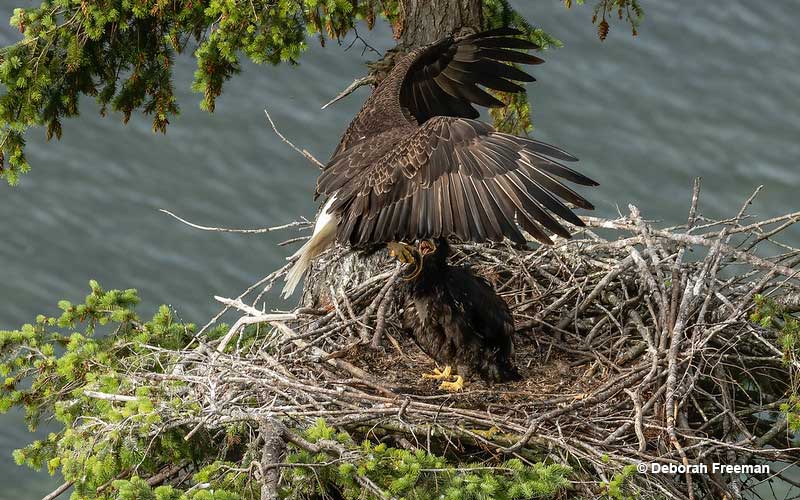
© Deborah Freeman
Also, their preference for nesting in old, large trees with “super-canopies” makes them vulnerable to deforestation. Even if the large trees are salvaged in the area under development, excessive human activity in the area disrupts the nesting process, leading to nest abandonment.
Collisions
Collisions of different kinds also contribute to Bald Eagle mortality. Since they often consume animal carcasses such as roadkill, vehicles can fatally hurt Bald Eagles on the roadsides. Collisions with wind turbines and powerlines are also problematic.
Current Situation
According to 2019 data, there are 316,700 Bald Eagle individuals and 71,400 nesting pairs. By numbers alone, you can tell that the recovery of this bird has been extraordinary. Because of the success, the FSW removed the Bald Eagle from the Federal List of Threatened and Endangered Species in 2007.

Although we don’t list them as officially endangered anymore, Bald Eagles still enjoy protection under the famous Bald and Golden Eagle Protection Act, as well as the Migratory Bird Treaty Act. It is still illegal to capture, hurt, or kill Bald Eagles or endanger their habitats.
How Did Bald Eagle Overcome the Endangered Status?
Due to adequate population recovery, the Endangered Species Act no longer needs to protect the Bald Eagle. However, other acts continued to cover Bald Eagle protection, and the road to recovery was a rocky one.
Let’s have an overview of the crucial steps that made the recuperation possible.
The Protection Acts
The first step to the species’ remarkable recovery was the Bald and Golden Eagle Protection Act.
Originally passed in 1940 and still valid, this law enabled direct protection of the Bald Eagle and the Golden Eagle by “prohibiting the take, possession, sale, purchase, barter, offer to sell, purchase or barter, transport, export, or import, of any bald or golden eagle, alive or dead, including any part, nest, or egg, unless allowed by permit.”
However, the Golden Eagle Protection Act addressed only the direct threats to the eagles, like shooting, trapping, and nest destruction. The threat of synthetic pesticides and other chemicals that would decimate the population in the upcoming decades was still unknown. Also, the law made no effort to tackle habitat destruction.
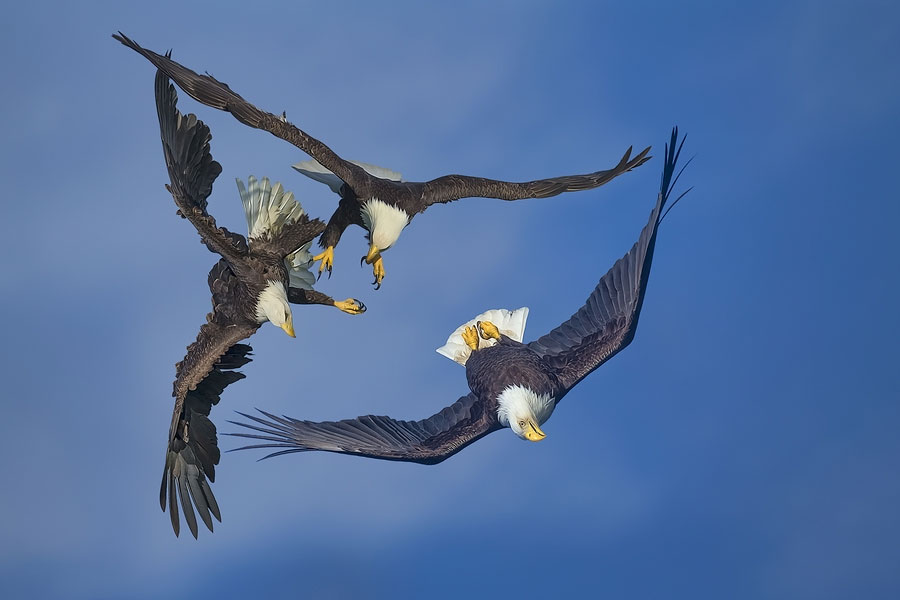
That is why the Bald Eagle continued to decline and came to only around 400 known breeding pairs in the 60s.
Finally, in 1978, following the implementation of the Endangered Species Act, the authorities listed Bald Eagle as ‘Endangered’ throughout the lower 48 states. The only exceptions were Michigan, Minnesota, Oregon, Washington, and Wisconsin. These states listed it as ‘Threatened’. The enlistment certainly helped to secure additional resources for conservation.
DDT Ban
As said before, DDT hindered raptor reproduction so much that parent birds practically couldn’t raise a new generation to inherit the North American skies.
Worried scientists have done a lot of reasearch on DDT’s effects on birds during the 1960s and 1970s, and some key findings came from Bald Eagle studies. The combination of scientific evidence and public pressure led to the 1972 DDT ban.
However, since DDT is a persistent pollutant that remains in the environment and travels long distances, outlawing it didn’t immediately affect the desired recovery. It seemed as if the population couldn’t bounce back naturally.
That’s why there had to be intense conservation efforts like captive breeding and reintroduction.
Conservation Efforts
Conservationists established various active measures for Bald Eagle recovery.
Captive breeding programs proved to be successful and continued until recently. In some cases, ornithologists had to apply literal helicopter parenting and rescue the eggs with shells thinned out by DDT from being broken by parental incubation. Instead, they gave them a chance to hatch in captivity and then return them to their parents (probably also via helicopter).
In some states with high DDT burden like New York, the pairs with defective eggs were supplied with ‘adoptive’ eggs or chicks from DDT-free places like Alaska or from captive breeding programs.
Scientists were hoping that eagles hatching in the state would return to the same nesting areas – and luckily, they were right. Such measures helped re-establish the iconic eagle in the places where the existing birds were struggling with chemical influence.

However, for a new generation of eagles, having a place to live and successfully reproduce is crucial for survival. Habitat protection needed to be improved and expanded. Consequently, the government designated new national wildlife refuges and enabled the protection of prominent nesting sites for the duration of the breeding season, even in otherwise unprotected areas.
Still, under the constant pressures of land development, habitat destruction remains one of the greatest threats to Bald Eagles and many other endangered species.
FAQ
How rare is it to see a Bald Eagle nowadays?
Although you can observe them across the country at different times of the year, Bald Eagles can be predominantly spotted around suitable habitats – water bodies with forests and large trees nearby. Thus, you can mostly find them within nature reserves. In fact, there are nature reserves specially designated for Bald Eagles.
Alaska is the U.S. state where Bald Eagles are the most abundant. Some of the best places in the country to observe them include Alaska’s Chilkat Bald Eagle Preserve, Florida‘s Prairie Lakes, Connecticut‘s Eagle Landing State Park, Delaware‘s Bombay Hook National Wildlife Refuge, Arkansas‘s Lake Dardanelle, Alabama‘s Pickwick Lake, and California‘s Lower Klamath National Wildlife Refuge.
Were Bald Eagles close to extinction?
Yes, Bald Eagle numbers were so bad in the mid-20th century that the species faced a serious risk of extinction. Only 417 known pairs remained in the contiguous 48 states in the 1960s.
What saved the Bald Eagle?
Legal protection, the ban on DDT, and cross-country conservation efforts brought the Bald Eagle back from the brink of extinction. The success continues to be one of the most persuasive cases for conservation in general.
